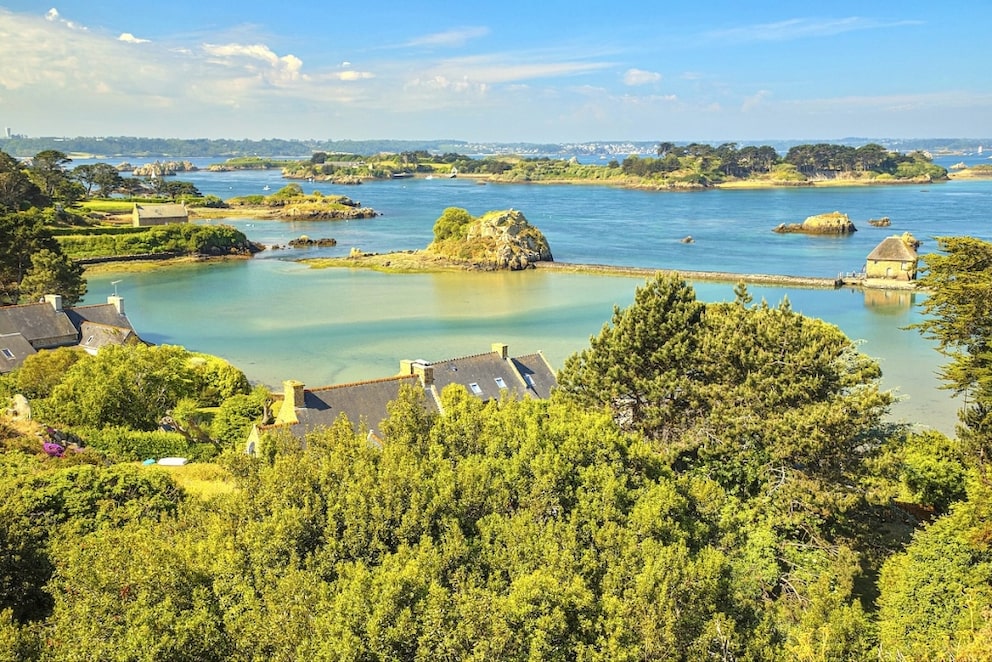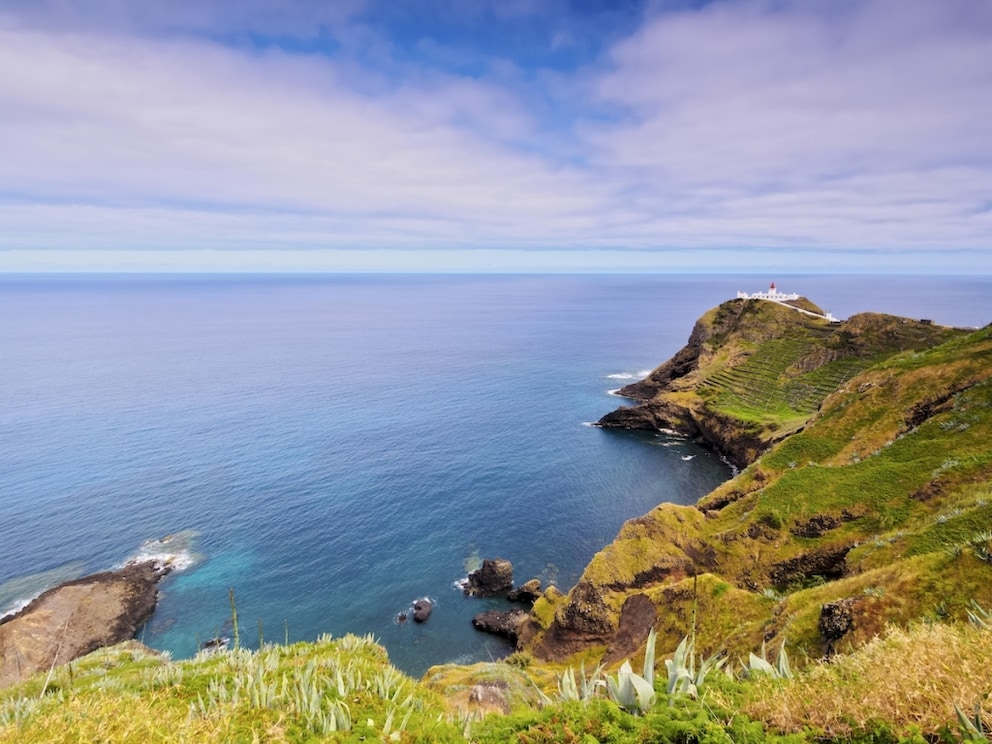June 25, 2025, 3:49 am | Read time: 4 minutes
Have you ever heard of Porto Santo? Or St. Kilda? These and many other little-known islands are located in the Atlantic Ocean and are definitely worth a visit.
Tenerife and Gran Canaria are known to everyone. But have you ever heard of Île de Bréhat? Of St. Kilda? Or of Porto Santo? All these islands have one thing in common: They are located in the Atlantic Ocean. While some are true tourist magnets, others are so unknown that they have more animals than people. TRAVELBOOK presents seven virtually unknown islands in the Atlantic.
1. Île de Bréhat, France
You could almost overlook the small island off the Côtes-d’Armor. Just a 15-minute ferry ride from the north coast of Brittany, the Île de Bréhat rises like a jewel from the Atlantic. The Gulf Stream gives it a special microclimate with mild winters. Here, hydrangeas, mimosas, and agapanthus bloom in vibrant competition. Hence, the island is also called the “Island of Flowers.” The south is particularly fragrant and green, while the northern island is characterized mainly by its typical pink granite rocks. Only about 400 people live permanently on Île de Bréhat. Fortunately, there are still some charming holiday accommodations waiting for those seeking relaxation. In addition to sun, sea, and natural beauty, there’s one thing you get for free: peace. Cars are banned.

2. Porto Santo, Portugal
This little gem is the neighboring island of Madeira and offers, among other things, a 9-kilometer-long sandy beach. Just a 20-minute flight or a two to three-hour ferry ride from its larger sister island, Porto Santo is perfect for a day trip. It is said that Christopher Columbus lived on the island for a few years—he was married to the daughter of the island’s governor. The house where the explorer is said to have lived is now a museum.
Also interesting: England’s most famous cave, where there were once gruesome rituals
3. St. Kilda, Scotland
Only about 35 people live on the “Bird Island,” as Foula is translated from the Viking language. It is part of the Shetland Islands, where people lived as far back as 3,000 years ago. Foula boasts spectacular cliffs and five “mountains,” and according to the tourism website “Shetland,” a stunning display of wildflowers in various colors can be seen here. The name Bird Island is no coincidence, as Foula is home to the world’s largest colony of great skuas. Another unique feature is that the people on Foula still live according to the Julian calendar, celebrating Christmas on January 6 and New Year’s on the 13th.
4. Santa Maria, Azores (Portugal)
The Azores archipelago, with its nine volcanic islands, is located in the middle of the Atlantic Ocean. Each of the Portuguese islands has its own unique character. Most tourists first head to the city of Ponta Delgada on São Miguel, the main island with its diverse landscapes. From there, the island group can be perfectly explored. In the far southeast, Santa Maria stands out as the geologically oldest of the Azorean gems. It offers beautiful beaches, especially in the Baia de São Lourenço in the northeast and the popular Praia Formosa in the south. Santa Maria is also a fascinating underwater destination for divers. For those who prefer to stay on dry land, there is an 80-kilometer circular hiking trail around the island, the longest hiking trail in the Azores.

5. Vestmannaeyjar, Westman Islands, Iceland
They are also among the lesser-known islands in the Atlantic: the Westman Islands. Life on Heimaey, the main island of the Westman archipelago, is like dancing on a volcano. Older residents will never forget the year 1973 when the Eldfell volcano erupted. For over half a year, it spewed so much lava that it buried 417 houses and eventually increased the island’s size by two square kilometers. Those on the trail of the cute puffins should hike to the Stórhöfdi peninsula. Green slopes hide the world’s largest colony of these birds. The cliffs on the north side are particularly impressive, offering a wonderful panoramic view all the way to the legendary Eyjafjallajökull on the mainland, which disrupted air traffic in parts of Europe in 2010 and provides rare photo opportunities.
And in the evening? Of course, it’s time to head to the pub, as is the British way. The “Beluga Whale Sanctuary” invites you to dinner and drinks. The adjoining guest cabins promise a particularly cozy night’s rest. They are located right by the sea—at 60 degrees north.

The 5 Most Beautiful Beaches on Porto Santo—One Being 9 Kilometers Long!

The 25 Coolest Travel Experiences Worldwide


